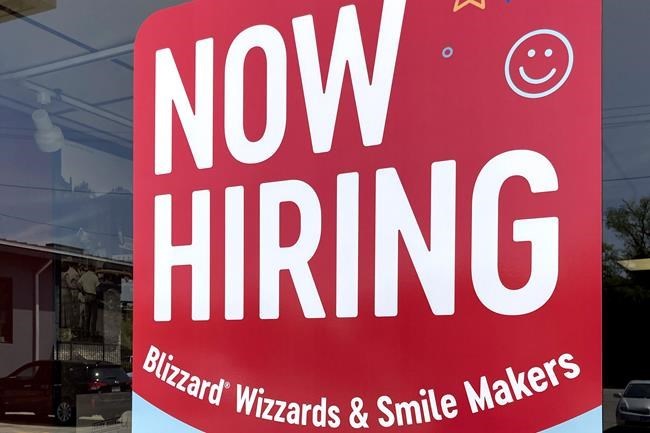U.S. applications for jobless claims rose slightly last week but remain at healthy levels with companies reticent to let go of employees in a tight labor market.
The number of Americans filing for jobless claims for the week ending May 20 rose by 4,000 to 229,000 from 225,000 the week before, the Labor Department reported Thursday. The previous week's number was revised down by a significant 17,000.
The weekly claims numbers are broadly as representative of the number of U.S. layoffs.
The four-week moving average of claims, which evens out some of the week-to-week gyrations, was unchanged at 231,750 after the previous week's number was revised down by 12,500. Analysts have pointed to a sustained increase in the four-week averages as a sign that layoffs are accelerating, but are reluctant to predict that a spike in layoffs is imminent.
Overall, 1.8 million people were collecting unemployment benefits the week that ended May 13, about 5,000 more than the previous week.
Since the pandemic purge of millions of jobs three years ago, the U.S. economy has added jobs at a breakneck pace and Americans have enjoyed unusual job security. That’s despite interest rates that have been rising for more than a year and fears of a looming recession.
Early this month, the Fed raised its benchmark lending rate for the 10th time in a row in its bid to cool the economy and bring down four-decade high inflation. Though the labor market still favors workers, there have been some recent indications that the Fed’s policy actions are working.
In April, U.S. employers added a healthy 253,000 jobs and the unemployment rate dipped to 3.4%, matching a 54-year low. But the figures for February and March were revised lower by 149,000 jobs, potentially signaling that the Fed’s rate policy strategy is starting to cool the job market.
The government also recently reported that U.S. job openings fell in March to the lowest level in nearly two years.
The Fed is hoping to achieve a so-called soft landing — lowering growth just enough to bring inflation under control without causing a recession. Economists are skeptical, with many expecting the U.S. to enter a recession later this year.
Markets are hoping that Fed hits pause on its rate hikes at its next meeting. Minutes from the Fed's last meeting showed that Fed officials were split on whether to raise its benchmark borrowing rate.
Earlier Thursday, the Commerce Department reported that U.S. economy grew at a lackluster 1.3% annual rate from January through March as businesses wary of an economic slowdown trimmed their inventories. That's a slight upgrade from its initial estimate of 1.1%.
There have been an increasing number of high-profile layoffs recently, mostly in the technology sector, where many companies now acknowledge overhiring during the pandemic. IBM, Microsoft, Salesforce, Twitter, Lyft, LinkedIn and DoorDash have all announced layoffs in recent months. Amazon and Facebook parent Meta have each announced two sets of job cuts since November.
But it’s not just the tech sector that’s trimming staff. McDonald’s, Morgan Stanley and 3M also announced layoffs recently.
Matt Ott, The Associated Press



